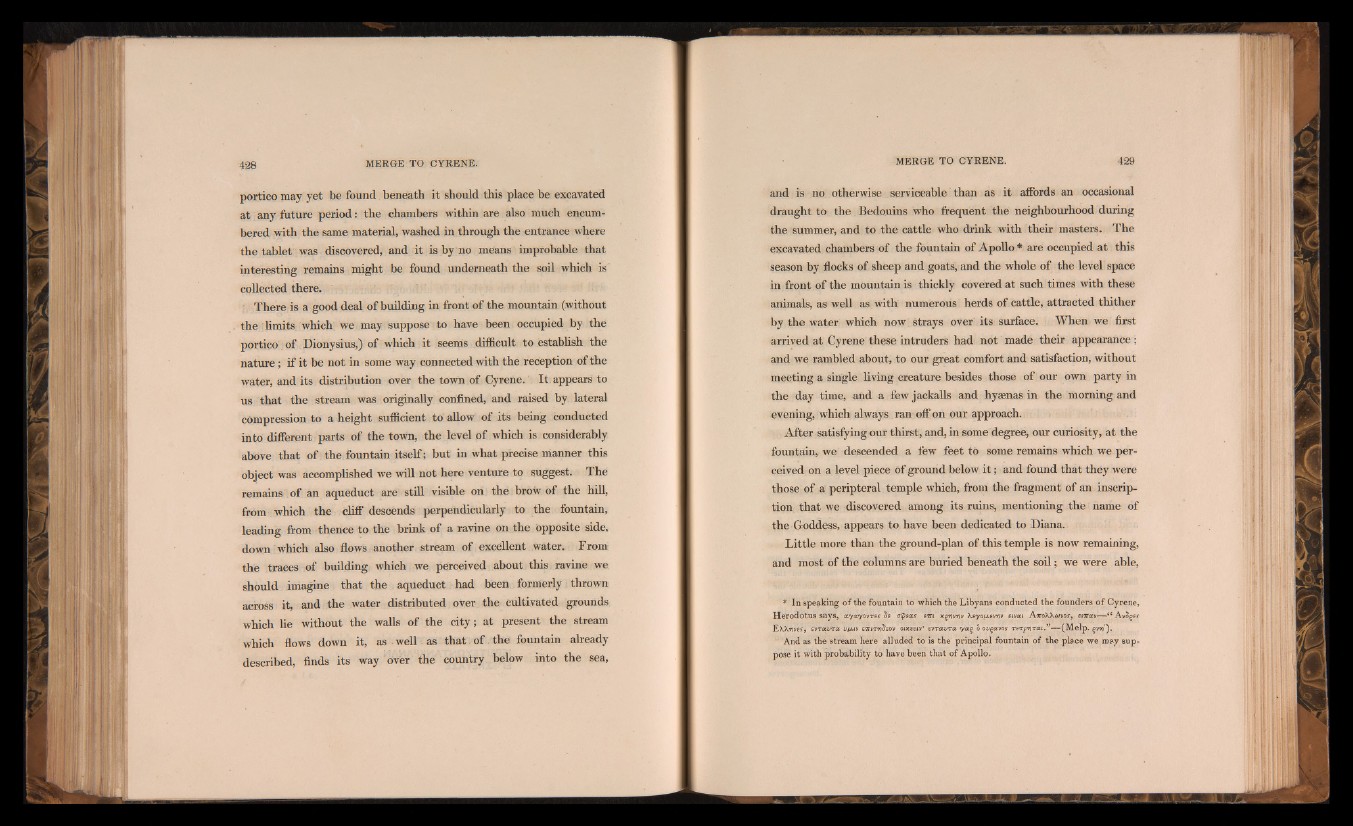
portico may yet be found beneath it should this place be excavated
at any future period: the chambers within axe also much encumbered
with the same material, washed in through the entrance where
the tablet was discovered, and it is by no means improbable that
interesting remains might be found underneath the soil which is
collected there.
There is a good deal of building in front of the mountain (without
the limits which we may suppose to have been occupied by the
portico of Dionysius,) of which it seems difficult to establish the
nature; if it be not in some way connected with the reception of the
water, and its distribution over the town of Cyrene. It appears to
us that the stream was originally confined, and raised by lateral
compression to a height sufficient to allow of its being conducted
into different parts of the town, the level of which is considerably
above that of the fountain itself; but in what precise manner this
object was accomplished we will not here venture to suggest. The
remains of an aqueduct are still visible on the brow of the hill,
from which the cliff descends perpendicularly to the fountain,
loarting from thence to the brink of a ravine on the opposite side,
down which also flows another stream of excellent water. From
the traces of building which we perceived about this ravine we
should imagine that the aqueduct had been formerly thrown
across it, and the water distributed over the cultivated grounds
which lie without the walls of the city; at present the stream
which flows down it, as well as that of the fountain already
described, finds its way over the country below into the sea,
and is no otherwise serviceable than as it affords an occasional
draught to the Bedouins who frequent the neighbourhood during
the summer, and to the cattle who drink with their masters. The
excavated chambers of the fountain of Apollo * are occupied at this
season by flocks of sheep and goats, and the whole of the level space
in front of the mountain is thickly covered at such times with these
animals, as well as with numerous herds of cattle, attracted thither
by the water which now strays over its surface. When we first
arrived at Cyrene these intruders had not made their appearance ;
and we rambled about, to our great comfort and satisfaction, without
meeting a single living creature besides those of our own party in
the day time, and a few jackalls and hyaenas in the morning and
evening, which always ran off on our approach.
After satisfying our thirst, and, in some degree, our curiosity, at the
fountain, we descended a few feet to some remains which we perceived
on a level piece of ground below i t ; and found that they were
those of a peripteral temple which, from the fragment of an. inscription
that we discovered among its ruins, mentioning the name of
the Goddess, appears to have been dedicated to Diana.
Little more than the ground-plan of this temple is now remaining,
and most of the columns are buried beneath the soil; we were able,
* In speaking of the fountain to which the Libyans conducted the founders of Cyrene,
Herodotus says, ayxyovres 5 s aipeas em xgTjyyjv Xeyofxevnv eivai AttoWcjvos, email— - “ Av^gEjr
EXXwer, evrdvra vfx.iv eirirri^eov oixeeiv' evravra ya(> o ovqavos rerpviTai. (M el p. gv»').
And as the stream here alluded to is the principal fountain of the place we may suppose
it with probability to have been th a t of Apollo.